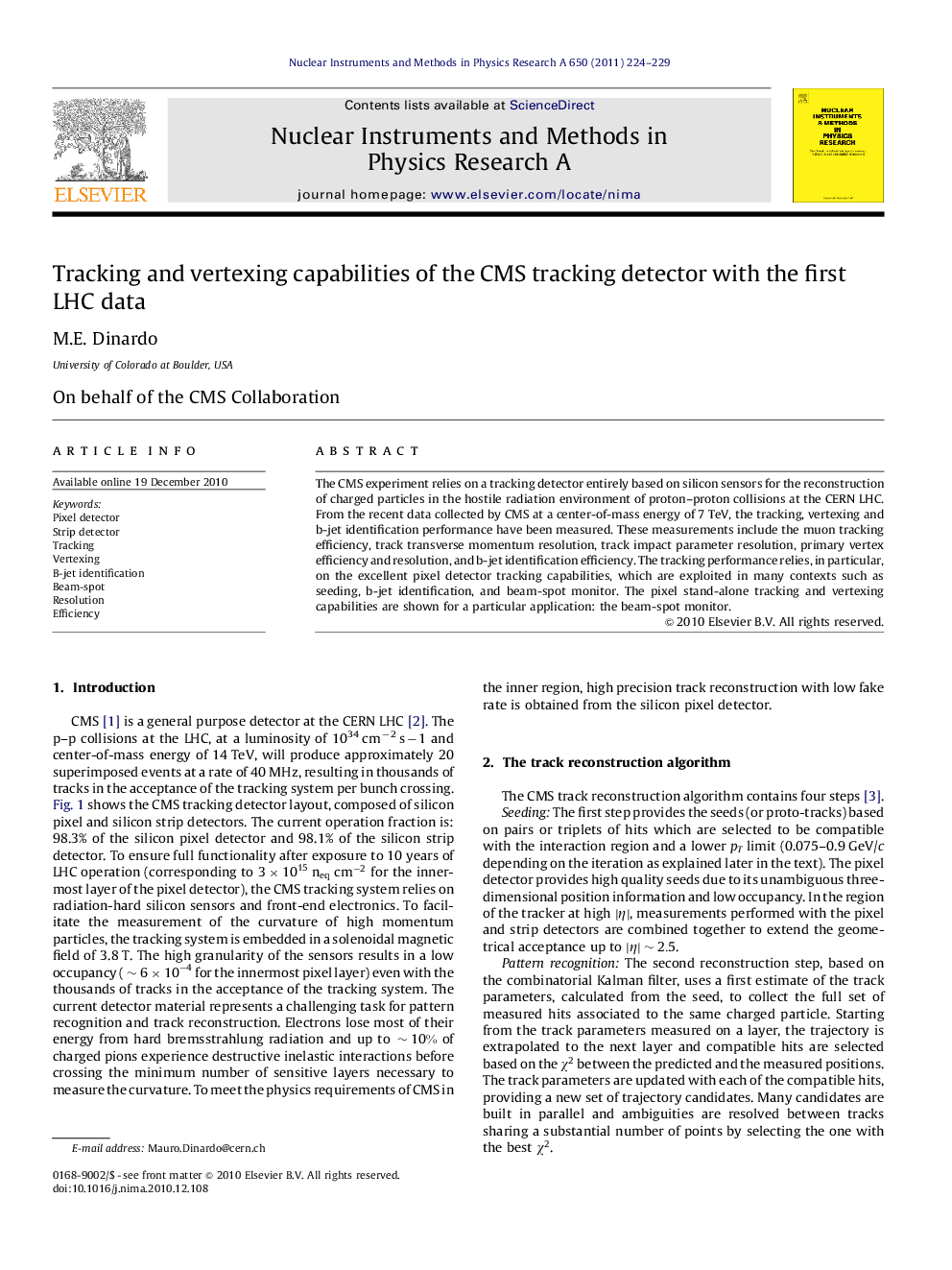| Article ID | Journal | Published Year | Pages | File Type |
|---|---|---|---|---|
| 1824754 | Nuclear Instruments and Methods in Physics Research Section A: Accelerators, Spectrometers, Detectors and Associated Equipment | 2011 | 6 Pages |
The CMS experiment relies on a tracking detector entirely based on silicon sensors for the reconstruction of charged particles in the hostile radiation environment of proton–proton collisions at the CERN LHC. From the recent data collected by CMS at a center-of-mass energy of 7 TeV, the tracking, vertexing and b-jet identification performance have been measured. These measurements include the muon tracking efficiency, track transverse momentum resolution, track impact parameter resolution, primary vertex efficiency and resolution, and b-jet identification efficiency. The tracking performance relies, in particular, on the excellent pixel detector tracking capabilities, which are exploited in many contexts such as seeding, b-jet identification, and beam-spot monitor. The pixel stand-alone tracking and vertexing capabilities are shown for a particular application: the beam-spot monitor.
